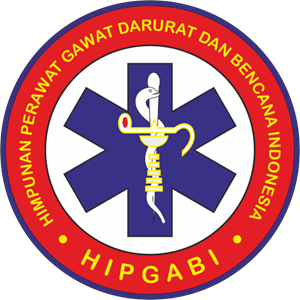PROGRESIVE MUSCLE RELAXATION MENURUNKAN FREKUENSI NYERI PADA PENDERITA KANKER PAYUDARA YANG MENJALANI KEMOTERAPI DI POSA RSUD DR.SOETOMO SURABAYA
Downloads
Introduction: Breast cancer pain occurs because inflammation, pain because of the edge receptor Nerve damage due to the inflammation or sandwiched posted swelling. Progresive muscle relaxation (PMR) Frequency Against breast cancer Pain Patients with chemotherapy at POSA Dr. Soetomo hospital.
Methods: One group pretest – posttest design was used in this study. The population were the breast cancer patients with chemotherapy in POSA Dr. Soetomo amounting 30 respondents. There were 28 respondents as sample, taken according inclusion criteria. Independent variable of this research was PMR. Dependent variable was frequency of breast cancer pain. Data was collected by using questionaire and observation sheets. Data was analyzed using paired t test with level of significant <0.05.
Results: Results showed there was effect of progressive muscle relaxation (PMR) frequency against breast cancer pain (p=0.000). Further research could continues with using different methods related to this experiment
Alim, M.B. 2010. Langkah-langkah Relaksasi Otot Progresif, http//www
psikologi Zone diambil 20 Juli 2014
Maryani, A. 2008. Pengaruh Progressive Muscle Relaxation Terhadap
kecemasan, mual dan muntah setelah kemoterapi pada pasien kanker
payudara di Poliklinik RS Hasan Sadikin Bandung, Perpustakaan FKUI
Perhimpunan Onkologi Indonesia 2010. Pedoman Tatalaksana Kanker
fakulatas Kedokteran Universitas Indonesia, Perpustakaan FKUI
Ramdhani, N. & Putra A. 2008. Pengembangan Multi Media Relaksasi otot Progresif, http://www.psikologizon.com diakses tanggal 20 oktober 2014
Rosjidi, I.2010a, Epidemiologi kanker pada Wanita, Jakarta: Sagung Seto
Rosjidi, I. 2010b. Perawatan paliatif suportif bebas nyeri pada kanker, Sagung Seto, Jakarta.
Sukardja, I. 2000. Onkologi Klinik, Fakultas Kedoteran Universitas Airlangga, Surabaya.
Smetzer, S.C. & Bare, B.G. 2012. Buku Ajar Keperawatan Medical Bedah
(Brunner & Suddarth), EGC, Jakarta.
1. The journal allows the author to hold the copyright of the article without restrictions.
2. The journal allows the author(s) to retain publishing rights without restrictions.
3. The legal formal aspect of journal publication accessibility refers to Creative Commons Attribution (CC BY).

















